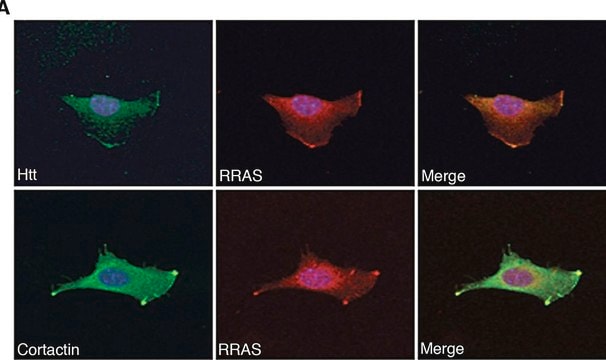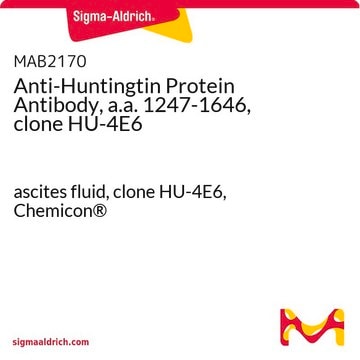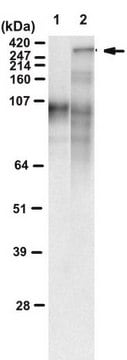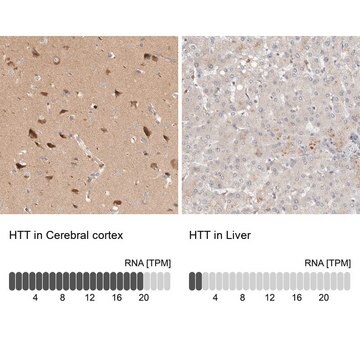MAB5492
Anti-Huntingtin Antibody, a.a. 1-82
ascites fluid, clone 2B4, Chemicon®
Sinônimo(s):
Anti-Huntingtin, Anti-Huntingtin Antibody, Detection Antibody
About This Item
Produtos recomendados
fonte biológica
mouse
Nível de qualidade
forma do anticorpo
ascites fluid
tipo de produto de anticorpo
primary antibodies
clone
2B4, monoclonal
reatividade de espécies
human
fabricante/nome comercial
Chemicon®
técnica(s)
ELISA: suitable
immunocytochemistry: suitable
immunohistochemistry: suitable
western blot: suitable
Isotipo
IgG1
nº de adesão NCBI
nº de adesão UniProt
Condições de expedição
dry ice
modificação pós-traducional do alvo
unmodified
Informações sobre genes
human ... HTT(3064) , SLC6A4(6532)
Especificidade
Imunogênio
Aplicação
Neuroscience
Neurodegenerative Diseases
Immunocytochemistry (1): 1:500-1:5,000
Immunohistochemistry (1,2): 1:500-1:5,000
ELISA: 1:500-1:5,000
Optimal working dilutions must be determined by end user.
Descrição-alvo
forma física
Armazenamento e estabilidade
Nota de análise
Normal human cerebral cortex lysate, Mouse brain cortex samples from HD or wild type mice
Outras notas
Informações legais
Exoneração de responsabilidade
Not finding the right product?
Try our Ferramenta de seleção de produtos.
recomendado
Código de classe de armazenamento
12 - Non Combustible Liquids
Classe de risco de água (WGK)
WGK 1
Ponto de fulgor (°F)
Not applicable
Ponto de fulgor (°C)
Not applicable
Certificados de análise (COA)
Busque Certificados de análise (COA) digitando o Número do Lote do produto. Os números de lote e remessa podem ser encontrados no rótulo de um produto após a palavra “Lot” ou “Batch”.
Já possui este produto?
Encontre a documentação dos produtos que você adquiriu recentemente na biblioteca de documentos.
Nossa equipe de cientistas tem experiência em todas as áreas de pesquisa, incluindo Life Sciences, ciência de materiais, síntese química, cromatografia, química analítica e muitas outras.
Entre em contato com a assistência técnica







